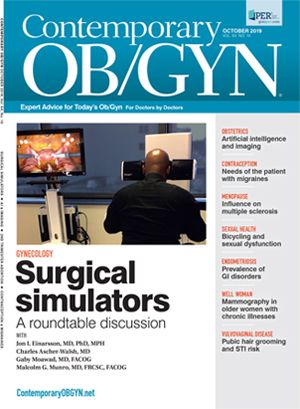Pubic hair grooming and STI risk
Newly published research contradicts earlier findings about pubic hair grooming as a risk factor for sexually transmitted infection (STI).
©vladimirfloyd - stock.adobe.com

Newly published research in PLOS One contradicts earlier findings about pubic hair grooming as a risk factor for sexually transmitted infection (STI). Earlier studies suggested an association between the practice and higher STI rates, but that might not be the case, at least in young, wealthier, white women.
The study objective was to evaluate the association between self-reported extreme grooming and laboratory-confirmed prevalence of gonorrhea and Chlamydia trachomatis (GC/CT) among female university students. The participants, who presented at one of two walk-in STI testing sites on the campus of a large university from April 2017 to April 2018, completed a questionnaire on demographics, sexual behavior, STI risk factors and pubic hair grooming.
Extreme grooming was defined as removal of pubic hair either at least weekly in the past 12 months or ≥ 6 times in the past 30 days. The authors also used two logistic regression models to determine whether odds of GC/CT varied by extreme groomer status for either time interval.
Prevalence of GC/CT was 9.8% among the 214 women in the study. Most of them were white (75.2%), single (72.0%) and reported a parental or guardian income of $60,000 or higher. Almost all of the participants who reported ever grooming (98.1%), 53.6% were extreme groomers in the past year and 18% in the past month. Nearly two-thirds (63.3%) had experienced a grooming injury, and the mean number of lifetime grooming injuries was 4.9 (SD = 3.8).
In both unadjusted and adjusted models, the authors found no difference in the odds of GC/CT between women who were extreme groomers within the past 12 months and those who were not extreme groomers (OR=0.8, 95% CI 0.3-1.9; adjusted OR = 0.6, 95% CI 0.3-2.0, respectively). Unadjusted and adjusted associations between extreme grooming within the past month and prevalent GC/CT were slightly stronger but were still non-significant (unadjusted OR = 0.5, 95% CI = 0.1-2.0; adjusted OR = 0.4, 95% CI 0.1-1.9).
Although these findings conflict with the results of earlier studies, the authors note that this study was limited by its population, both in terms of the number of participants and their homogeneity. Still, the authors believe their finding do not support the need for public health or clinical interventions to address pubic hair grooming as a risk factor for GC or CT. Future studies should focus on using a larger, more representative sample, the researchers said, to gather more precise estimates and wider generalizability.

FDA grants 510(k) clearance to cobas liat STI multiplex assay panels
Published: January 22nd 2025 | Updated: January 22nd 2025The new panels, leveraging rapid polymerase chain reaction technology, allow point of care sexually transmitted infection diagnosis in 20 minutes, enhancing targeted treatment and reducing follow-up losses.
Read More
Study finds lack of testing for gonorrhea, chlamydia during pregnancy
August 15th 2024Adherence to guideline-based laboratory testing and treatment of chlamydia and gonorrhea in pregnant women has been found to be suboptimal in the United States, indicating the potential for negative effects on newborn and maternal health.
Read More
